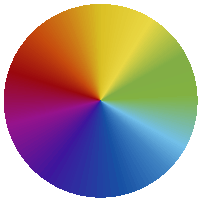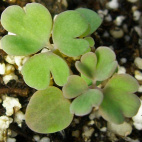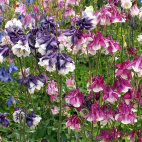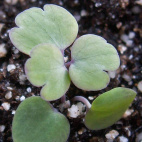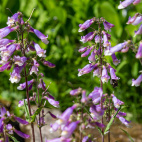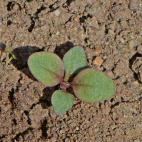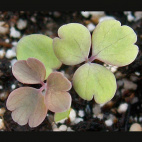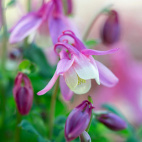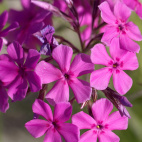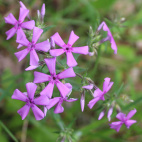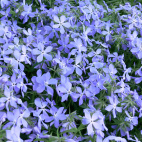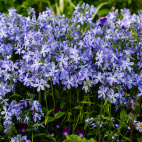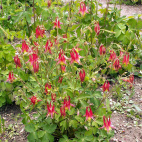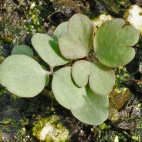Color
Availability
USDA Zone
Region
Type
Duration
Season
Germination
Soil
Sunlight
Height
Use
Narrow Your Search
Color
Availability
USDA Zone
Region
Type
Duration
Season
Germination
Soil
Sunlight
Height
Use
Wildflower Seeds - Northern Region
The Northern region is home to our Canadian friends in the eastern provinces, as well as the northern-most part of the Eastern US. This area is characterized by a long, cold winter with lots of snow, and a short humid summer that only lasts about 3 or 4 months. Most of the area is classified as a UDSA Growing Zone 4 or less, and the species that grow here have interesting ways to perpetuate themselves in spite of the short growing season. There are a lot of forests and wetlands in this region, so adequate moisture is hardly ever a problem. Look up your growing zone to make sure that the Northern wildflower seeds that you want to grow are winter hardy. Alternatively, just order annual flower seeds online so that the plant does not need to make it through the winter, but can reseed itself and come back from seed the next year.
-
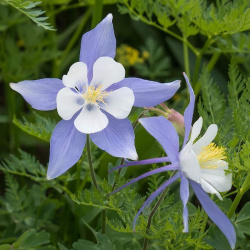 Blue Rocky Mountain Columbine Seeds
Aquilegia caerulea
This blue beauty grows in the meadows and cliffs of the Rocky Mountains. Many gardeners prize this clump-forming perennial with its large upward-facing blue and white flowers - it is so unique! Fill your home garden with a variety of our Midwest wildflower seed mixes.Quick Viewx
Blue Rocky Mountain Columbine Seeds
Aquilegia caerulea
This blue beauty grows in the meadows and cliffs of the Rocky Mountains. Many gardeners prize this clump-forming perennial with its large upward-facing blue and white flowers - it is so unique! Fill your home garden with a variety of our Midwest wildflower seed mixes.Quick ViewxBlue Rocky Mountain Columbine Seeds
Aquilegia caerulea
This blue beauty grows in the meadows and cliffs of the Rocky Mountains. Many gardeners prize this clump-forming perennial with its large upward-facing blue and white flowers - it is so unique! Fill your home garden with a variety of our Midwest wildflower seed mixes.
$3.48 Pkt - $20.16 / Oz -
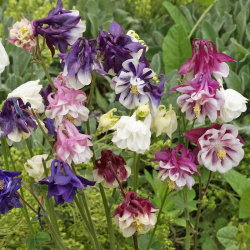 Dwarf Columbine Seed Mix
Aquilegia vulgaris
These delicate, nodding blossoms grow wild throughout much of northern Europe. This 16" dwarf variety produces a lovely mix of colors that will brighten any space!Quick View$3.48 Pkt - $12.65 / Oz
Dwarf Columbine Seed Mix
Aquilegia vulgaris
These delicate, nodding blossoms grow wild throughout much of northern Europe. This 16" dwarf variety produces a lovely mix of colors that will brighten any space!Quick View$3.48 Pkt - $12.65 / Oz -
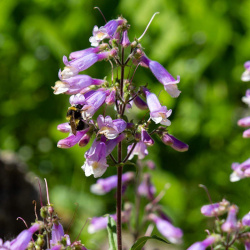 On Sale!
Hairy Beardtongue Seeds
Penstemon hirsutus
These pretty lavender blossoms develop on downy stems. Hummingbirds, bees, and butterflies are all captivated by the engaging tubular flowers. The plant's unusual name comes from the fuzzy tongue in each open bloom.Quick View$3.48 Pkt - $21.00 / Oz
On Sale!
Hairy Beardtongue Seeds
Penstemon hirsutus
These pretty lavender blossoms develop on downy stems. Hummingbirds, bees, and butterflies are all captivated by the engaging tubular flowers. The plant's unusual name comes from the fuzzy tongue in each open bloom.Quick View$3.48 Pkt - $21.00 / Oz -
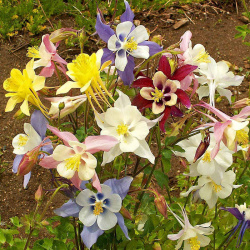 McKana Giants Columbine Seed Mix
Aquilegia caerulea
Developed explicitly for its large colorful blooms, this AAS Award winner first became available in the 1950s. A striking choice for any gardener who loves the distinctive columbine shaped flowers.Quick View$3.48 Pkt - $20.16 / Oz
McKana Giants Columbine Seed Mix
Aquilegia caerulea
Developed explicitly for its large colorful blooms, this AAS Award winner first became available in the 1950s. A striking choice for any gardener who loves the distinctive columbine shaped flowers.Quick View$3.48 Pkt - $20.16 / Oz -
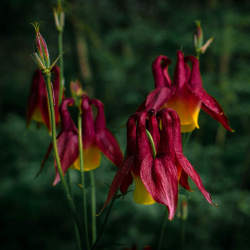 Out Of Stock
Oriental Columbine Seeds
Aquilegia oxysepala
These unusual maroon blossoms are native to parts of northern Asia and Europe. The lovely plant thrives in dry, sunny spots in open forests or on rocky slopes.Quick View$2.98 Pkt - $10.19 / Oz
Out Of Stock
Oriental Columbine Seeds
Aquilegia oxysepala
These unusual maroon blossoms are native to parts of northern Asia and Europe. The lovely plant thrives in dry, sunny spots in open forests or on rocky slopes.Quick View$2.98 Pkt - $10.19 / Oz -
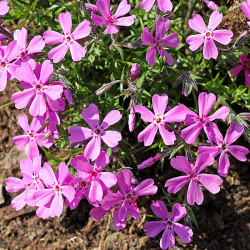 Store in the Fridge
Prairie Phlox Seeds
Phlox pilosa
Usually bright pink, these scented blossoms stud the prairie like so many gems. This native perennial grows on sandy soil in the wild but can be adapted to most garden soils that are not too wet. It takes a green thumb to grow this one.Quick View$3.96 Pkt - $240.00 / Oz
Store in the Fridge
Prairie Phlox Seeds
Phlox pilosa
Usually bright pink, these scented blossoms stud the prairie like so many gems. This native perennial grows on sandy soil in the wild but can be adapted to most garden soils that are not too wet. It takes a green thumb to grow this one.Quick View$3.96 Pkt - $240.00 / Oz -
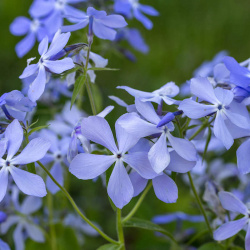 Store in the Fridge
Wild Blue Phlox Seeds
Phlox divaricata
Reminiscent of the lilac, a bouquet of these intensely fragrant blossoms will scent an entire room. Phlox Divaricata is quite rare in the wild, and it is a little challenging to grow. It is typically a woodland species, so it likes some shade in the garden.Quick View$3.96 Pkt - $320.00 / Oz
Store in the Fridge
Wild Blue Phlox Seeds
Phlox divaricata
Reminiscent of the lilac, a bouquet of these intensely fragrant blossoms will scent an entire room. Phlox Divaricata is quite rare in the wild, and it is a little challenging to grow. It is typically a woodland species, so it likes some shade in the garden.Quick View$3.96 Pkt - $320.00 / Oz -
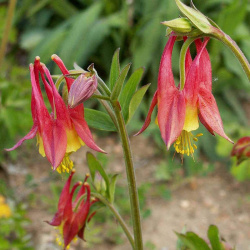 Wild Columbine Seeds
Aquilegia canadensis
Especially attractive to hummingbirds, this wildflower is a perfect choice for nature-lovers. The delicate red and yellow blossoms can grow in the open garden, but they seem to do better with some shelter and shade.Quick View$3.48 Pkt - $26.00 / Oz
Wild Columbine Seeds
Aquilegia canadensis
Especially attractive to hummingbirds, this wildflower is a perfect choice for nature-lovers. The delicate red and yellow blossoms can grow in the open garden, but they seem to do better with some shelter and shade.Quick View$3.48 Pkt - $26.00 / Oz
The Northern region is home to our Canadian friends in the eastern provinces, as well as the northern-most part of the Eastern US. This area is characterized by a long, cold winter with lots of snow, and a short humid summer that only lasts about 3 or 4 months. Most of the area is classified as a UDSA Growing Zone 4 or less, and the species that grow here have interesting ways to perpetuate themselves in spite of the short growing season. There are a lot of forests and wetlands in this region, so adequate moisture is hardly ever a problem. Look up your growing zone to make sure that the Northern wildflower seeds that you want to grow are winter hardy. Alternatively, just order annual flower seeds online so that the plant does not need to make it through the winter, but can reseed itself and come back from seed the next year.

